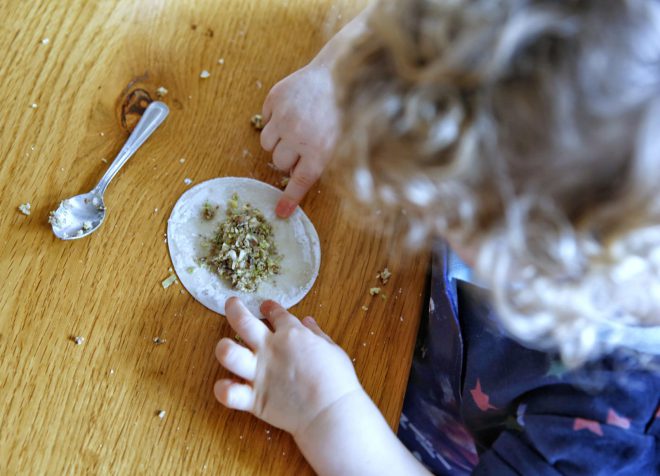Cooking with your children is not only a fun activity and a way to spend quality time together but also an opportunity for them to pick up valuable skills and, best of all, get them interested in trying new foods.
I think most people would agree that cooking is a fundamental life skill and one to teach our children. I was privileged to learn from my mum and grandma and spend time with them in the kitchen from a very young age and it’s something for which I’m immensely grateful. It means I can pass on and share my knowledge and love of food with my children but, also I wouldn’t be where I am now, running Kitchen Titbits and supporting families to enjoy stress-free mealtimes, if it weren’t for those early life experiences.
Being able to prepare a number of meals, no matter how basic, means we can nourish both our physical and mental wellbeing. And preparing a meal for our family is a way of showing our love for them (that’s why it hurts so much when our children reject the food we cook).
But did you know that cooking can also help children to develop a wide range of other skills? For example, measuring ingredients accurately requires mathematical ability, while reading recipe books develops literacy skills, preparing food demands spatial awareness and fine motor skills, they pick up health and safety knowledge and working in the kitchen helps children to become more confident and independent.
One of the greatest benefits of cooking with children, though, is that it can get them interested in exploring and trying new foods. When they’re involved in the cooking process, they’re more likely to eat the food that they’ve helped to prepare. Perhaps not immediately, but if you’re consistent and regularly get them involved in the kitchen, then it will come.
In the kitchen, they can get to know ingredients which helps them to feel comfortable and safe around them. This is a key part of the learning process as children need to know that foods are safe and enjoyable before they’ll eat them.
If you expand the activity beyond baking together and focus on savoury dishes or preparing fruits and vegetables, it’s a chance for them to learn about the foods you’re presenting to them at mealtimes.
They learn what foods look, feel and smell like and, without any pressure to eat, they may go a step further and explore what they taste like. It’s so much more fun to eat in the kitchen or to sneak something from the chopping board when your back is turned that it is to eat it off their plate at dinnertime!
You don’t need to invest a lot of time in the kitchen with your child for them to benefit. Some days, you might be pushed for time and just want to crack on with cooking, but even on those days, some simple tasks like helping get ingredients out of the fridge, talking about the ingredients you’re using, being involved in setting the table or serving once at the table, are enough to continue their journey of exploration.
When you have more time (and are prepared to embrace the mess!), there are some quick and and easy tasks they can be involved with such as squeezing, scrubbing, ripping, stirring, whisking, tipping or pressing buttons.
They can also do some chopping with child-safe knives – it’s great to teach them these skills from an early age so they don’t grow up being afraid of knives and understand how to be safe with them.
So, next time you’re in the kitchen with your little ones, remember that you’re not just teaching them how to cook, you’re also helping them to practice a whole host of other essential skills and to develop their love of food.
